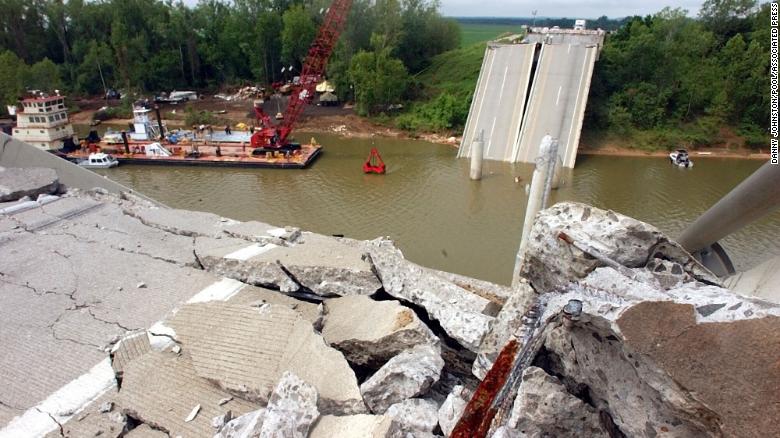The average bridge in USA is now 43 years old. According to the U.S. Department of Transportation, of the 600,905 bridges across the country as of December 2008, 72,868 (12.1%) were categorized as structurally deficient and 89,024 (14.8%) were categorized as functionally obsolete.
From 2005–2008, the number of deficient (structurally deficient plus functionally obsolete) bridges in rural areas declined by 8,596. However, in urban areas during the same time frame, there was an increase of 2,817 deficient bridges. Put another way, in 2008 approximately one in four rural bridges were deficient, while one in three urban bridges were deficient. The urban impact is quite significant given the higher level of passenger and freight traffic.
A structurally deficient bridge may be closed or restrict traffic in accordance with weight limits because of limited structural capacity. These bridges are not unsafe, but must post limits for speed and weight. A functionally obsolete bridge has older design features and geometrics, and though not unsafe, cannot accommodate current traffic volumes, vehicle sizes, and weights. These restrictions not only contribute to traffic congestion, they also cause such major inconveniences as forcing emergency vehicles to take lengthy detours and lengthening the routes of school buses.
With truck miles nearly doubling over the past 20 years and many trucks carrying heavier loads, the spike in traffic is a significant factor in the deterioration of America’s bridges. Of the more than 3 trillion vehicle miles of travel over bridges each year, 223 billion miles come from trucks.
To address bridge needs, states use federal as well as state and local funds. According to the American Association of State Highway and Transportation Officials (AASHTO), a total of $10.5 billion was spent on bridge improvements by all levels of government in 2004. Nearly half, or $5.1 billion, was funded by the Federal Highway Bridge Program—$3.9 billion from state and local budgets and an additional $1.5 billion in other federal highway aid. AASHTO estimated in 2008 that it would cost roughly $140 billion to repair every deficient bridge in the country about $48 billion to repair structurally deficient bridges and $91 billion to improve functionally obsolete bridges.
Simply maintaining the current overall level of bridge conditions that is, not allowing the backlog of deficient bridges to grow would require a combined investment from the public and private sectors of $650 billion over 50 years, according to AASHTO, for an average annual investment level of $13 billion. The cost of eliminating all existing bridge deficiencies as they arise over the next 50 years is estimated at $850 billion in 2006 dollars, equating to an average annual investment of $17 billion.

